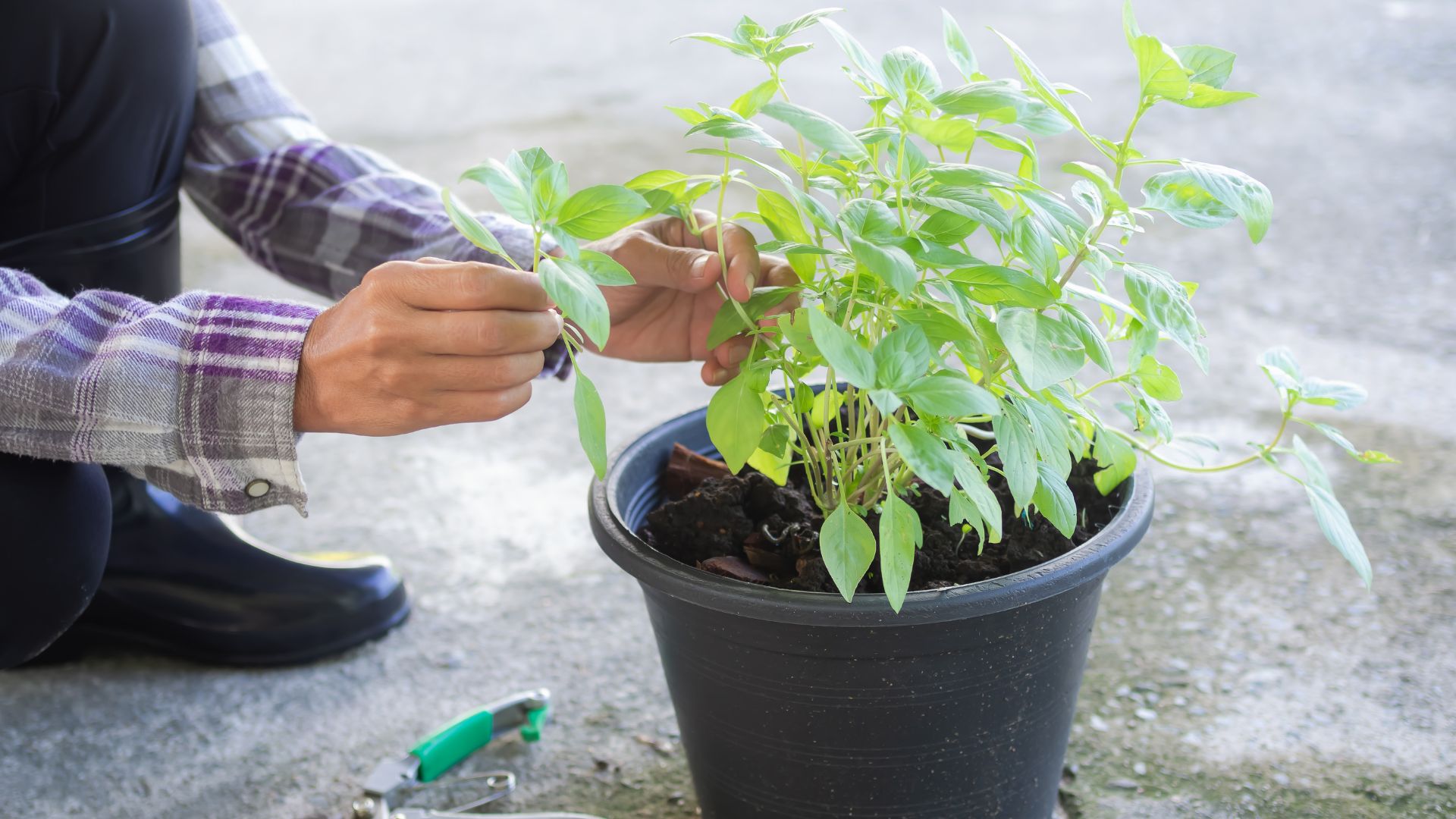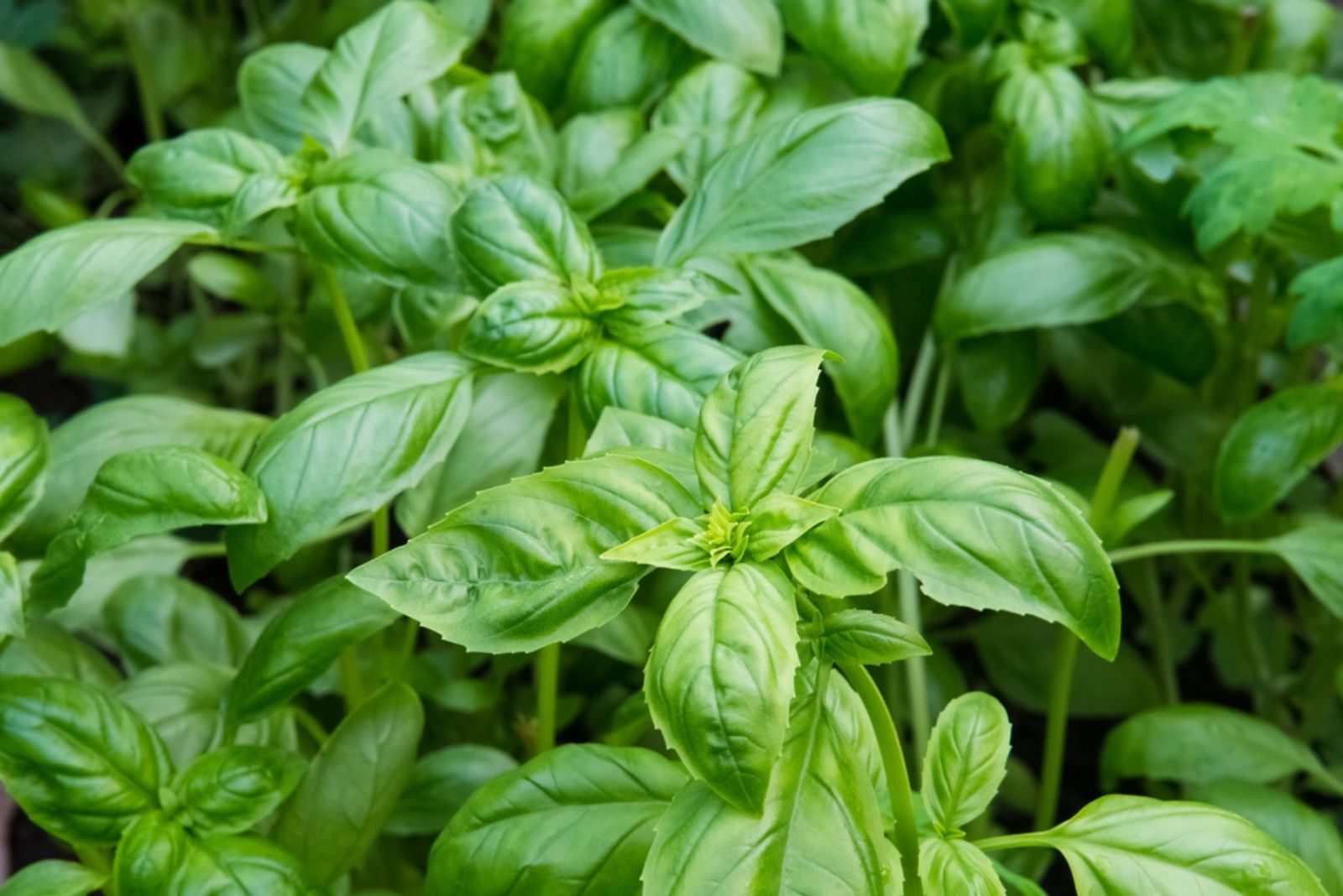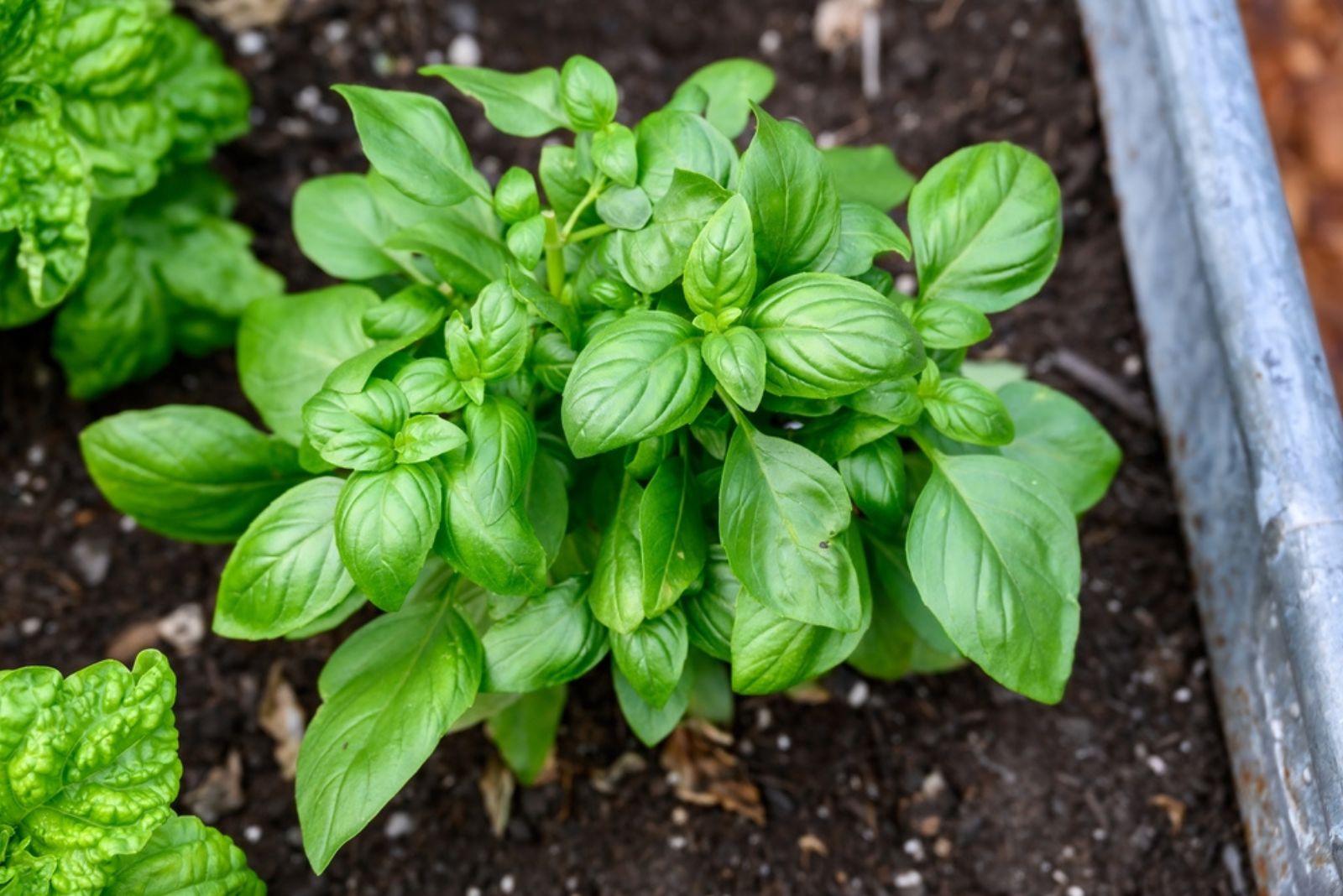The taste of pesto or pizza garnished with basil simply persuades us to add this delicious herb to our garden. If we add the fact that this plant is adaptable to various conditions, things are getting better and better.
This is a true beginner-friendly plant and it takes little knowledge and patience to get a bountiful harvest. One of the important aspects of maintenance is pruning your basil plant.
I’ll give you tips on pruning, why it matters, and some things to pay attention to regarding general maintenance.
Let’s get started!
How To Prune Basil
If you grow this herb from seeds, you can start pruning it as soon as you notice the formation of true leaves.
When your basil reaches maturity, you should prune it approximately every 3 weeks. I use sharp pruning scissors when pruning any plant. You can pick the excess leaves using your fingers but remember that clean cuts will allow your basil to generate healthy new leaves.
This herb typically reaches 2 feet if you meet all its requirements. Bear in mind that size can vary depending on the variety of basil you grow.
When To Prune
It’s essential to know when to prune basil because removing stems and foliage at the wrong time can severely affect its overall health.
The growing season of basil starts in late spring but the peak of its growth is during the summertime, i.e., when temperatures are high and there’s a lot of light.
Low temperatures are a frequent cause of basil stems turning brown.
Why Prune Basil?
Another question we should answer is why pruning is necessary for basil plants. First and foremost, pruning encourages plants to generate new growth.
This applies to almost all plants; removing excess foliage, branches, and even blossoms ensures healthier further development.
Pruning diseased, damaged, or dead parts allows your plants, including basil, to focus their energy on new growth.
Remember that yellowing or wilting basil indicates issues with light, temperature, or soil moisture, so after you remove that foliage, you must determine what caused it in the first place.
Of course, we also prune our herbs for consumption; nothing tastes as good as freshly picked basil leaves on pizza!
This is an annual plant, which means you’ll need to prune it back when the fall approaches. You can replant your basil in spring or when the soil temperatures increase.
Another benefit of pruning is that you delay the flower production, which affects the flavor of basil and may cause it to taste bitter.
Tips For Growing Basil
If this is your first time growing this herb or you’re unsure if you met all the requirements, here are a few basic things you should know about basil care.
• Ensure a lot of light: This herb enjoys full sun but will benefit from some shade in warm climates.
• Plant it in free-draining, rich, and moist soil: Amend the soil where you grow your basil with compost to boost the nutrient levels.
• Water regularly: Add water whenever the soil feels dry but make sure it doesn’t accumulate since it can cause rotting. You can put a layer of mulch on the basil soil to trap moisture.
• Plant some basil companions: Anis, asparagus, borage, and bell peppers get along well with basil and can prevent pest issues.
Are you ready to get your best basil harvest so far? Follow our instructions for pruning and enjoy the flavor of this magnificent herb!




